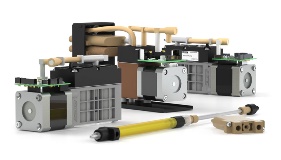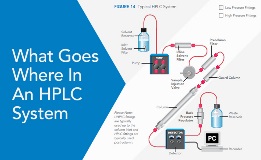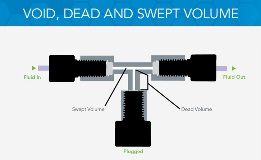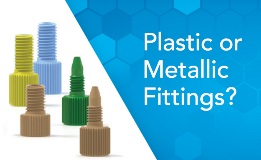

-
Proteomics and Biomarkers are Key to Better Medical Treatments
Feb 27, 2023 by IDEX Health & ScienceProteomics and biomarkers are key to more effective medical treatment plans. Learn how they work together to yield critical insights into diseases.
Full story
-
Importance of Degassing Fluids
Feb 7, 2023 by IDEX Health & ScienceDegassers avoid inaccurate sampling, maintain throughput and reduce errors by removing dissolved gases – even across complex fluid systems – before they outgas into bubbles. Utilizing degassing in your fluidic path is essential for consistent and accurate results.
Full story
-
What Goes Where in an HPLC System
Jan 25, 2023 by IDEX Health & ScienceOf course, fittings are standard items used to connect the components together, using tubing as the flow path bridge between components. Yet, one of the most commonly-asked questions regarding fittings is, “Where do all these fittings go in my system?” In other words, how do I know what to use and where? One common way to distinguish between fittings is by classifying them based on the pressure they can hold. This narrows the fittings choice based on where in the system they will be used. Learn what goes where in an HPLC system.
Full story
-
Hex-Head, Wrench-Flat to Knurled: How to Tighten Fittings
Dec 1, 2022 by IDEX Health & ScienceFittings are described by more than just their threads. Another major factor that helps determine what nut to use is the geometry of the head. Learn how to properly tighten the nut.
Full story
-
Proteomics Versus Genomics
Aug 30, 2022 by IDEX Health & ScienceWhat is proteomics and how does it differ from genomics? This post will discuss the definitions of proteomics and genomics, how they differ, and how life science applications are benefiting from this new approach to protein analysis.
Full story
-
Void, Dead, and Swept – an Interesting Concept
Jul 26, 2022 by IDEX Health & ScienceVoid, Dead, and Swept Volume. What do these terms means? Learn about the total internal volume of a fluidic flow path and why it's important to remove dead volume for applications such as chromatography.
Full story
-
If Your Fittings Leak
May 13, 2022 by IDEX Health & ScienceNo one wants leaks in their fluidic flow path. Leaks can cause bubbles, low pressure or no pressure and loss of fluid. All of these things can compromise you flow path and results. Check out these 6 tips if your fittings leak
Full story
-
Plastic or Metallic: Which One Do I Choose For A Fitting?
Apr 21, 2022 by IDEX Health & ScienceFluidic Tip - Plastic or metallic fittings? View our reference guide on which one to choose to optimize your fluidics path.
Full story
-
IDEX Health & Science Keeps to Project Deadlines with Moldflow
Mar 17, 2022 by IDEX Health & ScienceIDEX Health & Science was featured by KETIV in a customer success story that solved leaks and voids in a prep scale degasser.
Full story -
Always Consider the Chemical Environment in Your Flow Path
Mar 7, 2022 by IDEX Health & ScienceChemical compatibility in your application is key. If incompatible chemicals contact a fitting in your instrument, your flow path could be compromised. There are many sources for up-to-date information regarding chemical compatibility including the manufacturer of the fittings you have chosen to use. We highly recommend you refer to one of these sources before finalizing your fittings selection.
Full story
